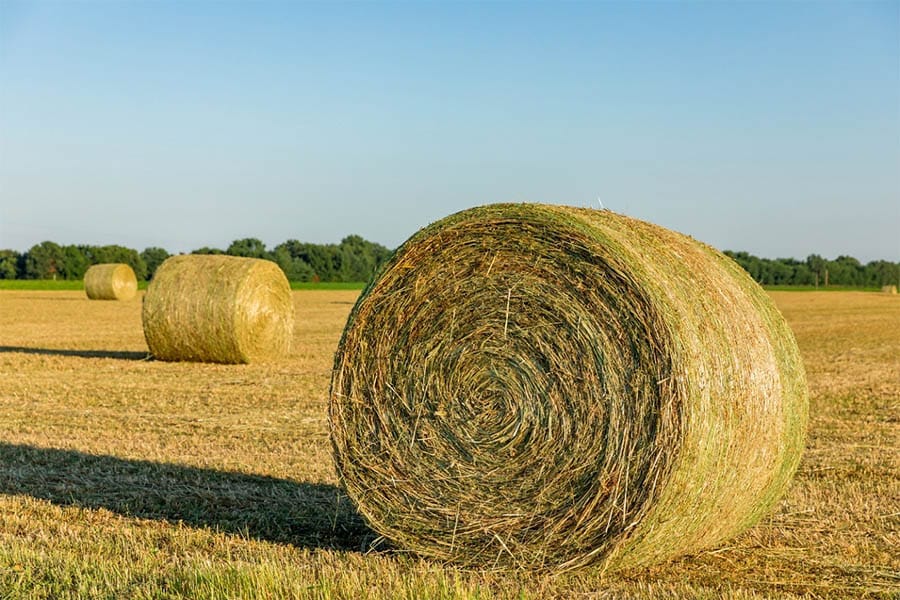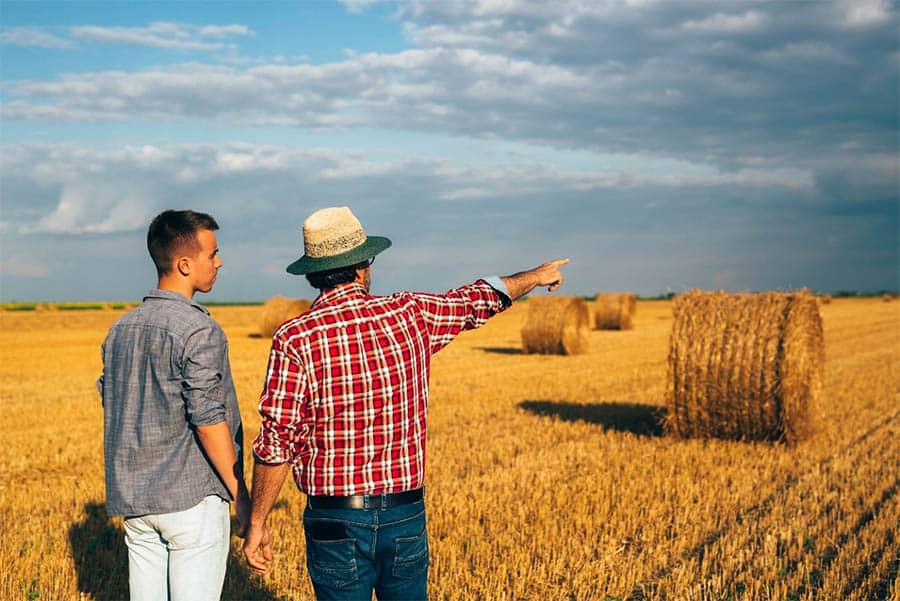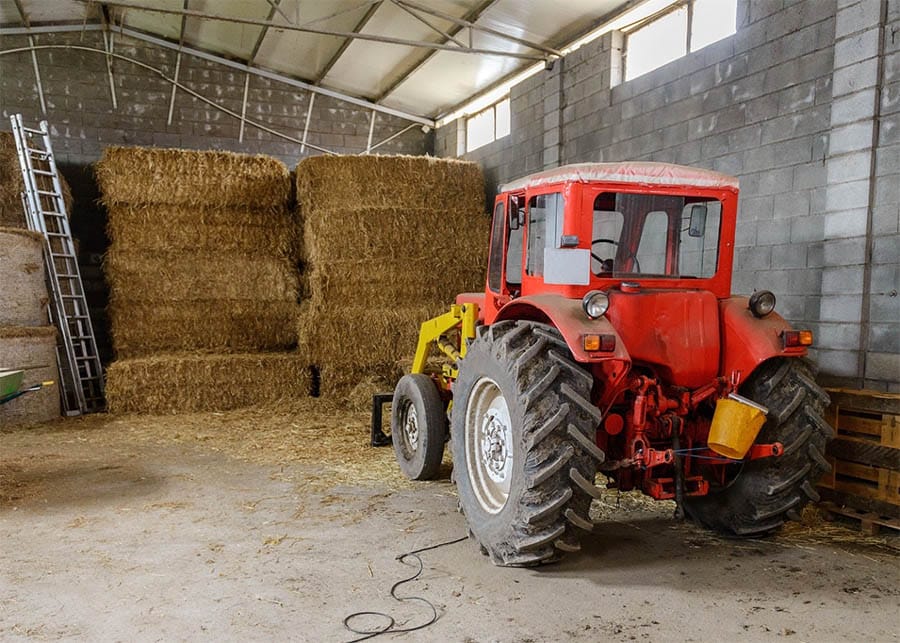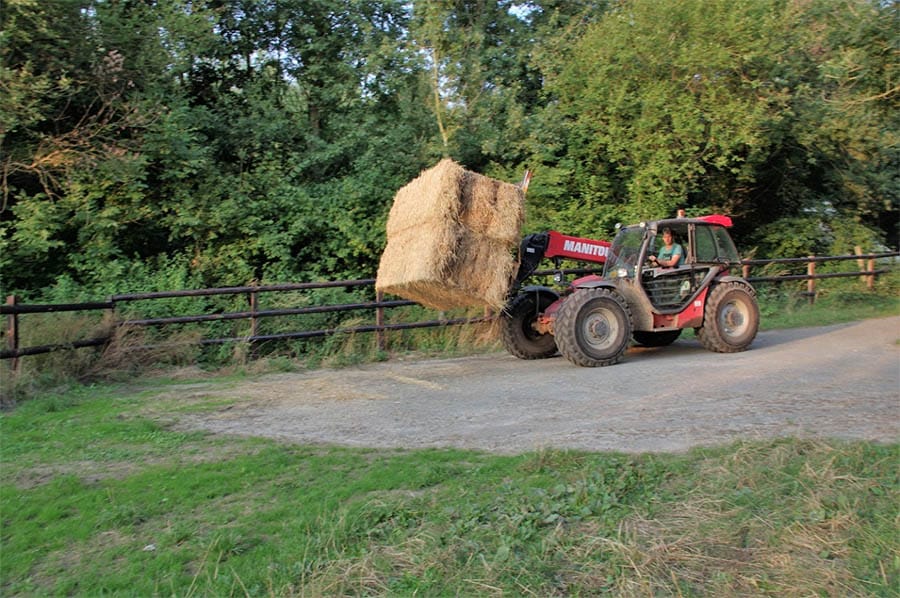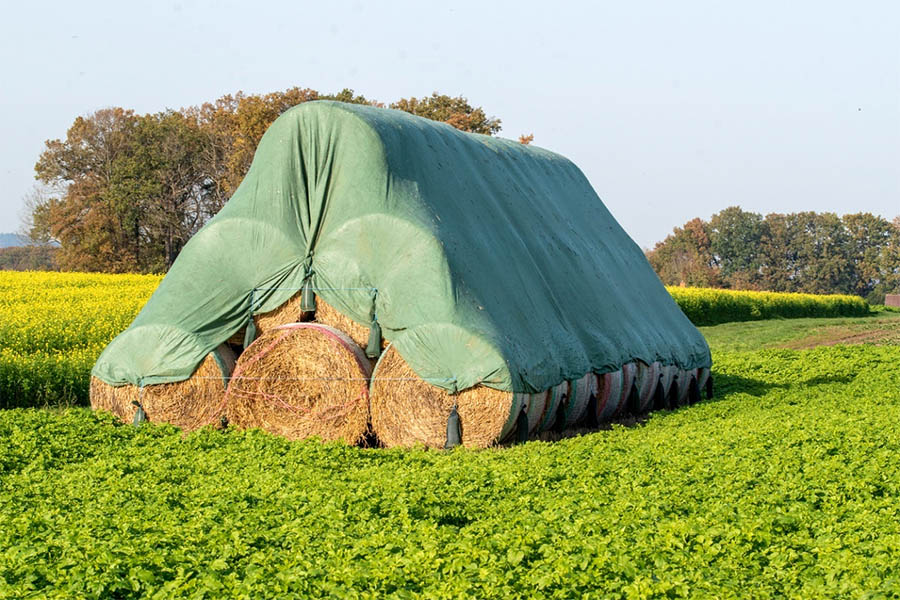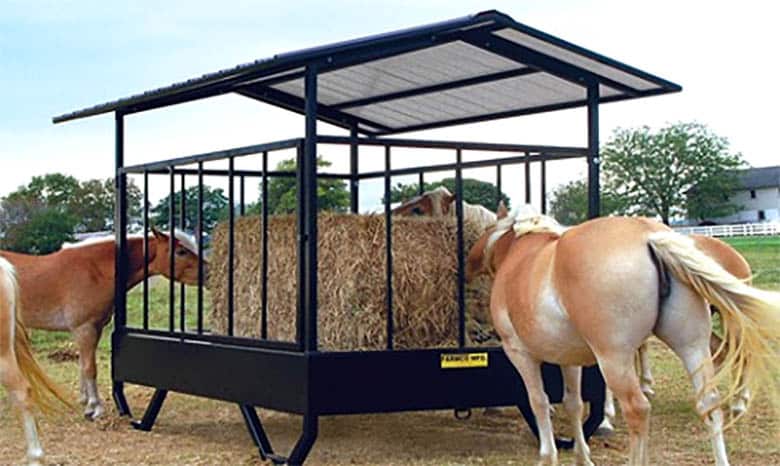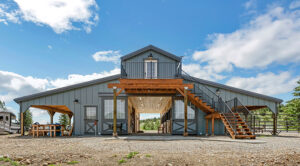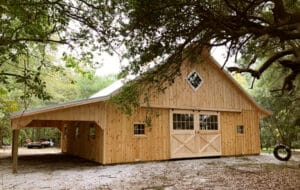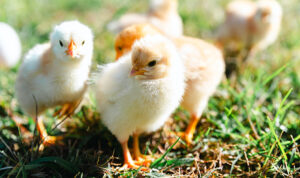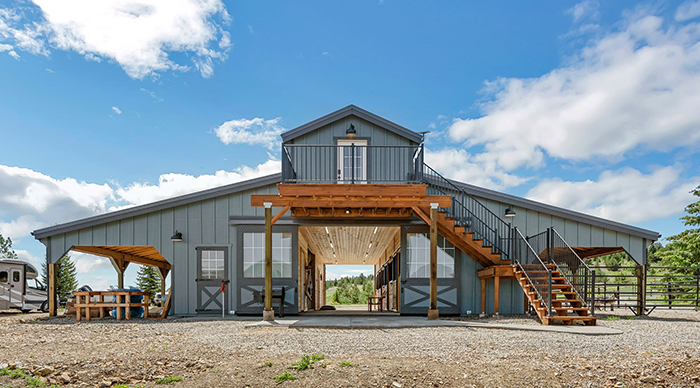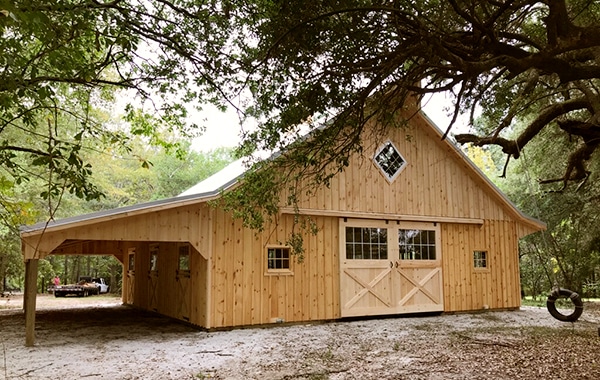When you consider the pluses and minuses of utilizing the large hay bale, it is smart to think about personal and personnel safety as well as hay quality, pricing, and availability.
The increased use of large square and large round hay bales for equine forage needs has resulted in a lot of people being hurt, and even killed, handling these awkward, heavy bundles of cured grass.
Most horse owners are well-versed in how to properly stack, store and distribute the familiar small square hay bales. These smaller user-friendly hay bales require a major labor input to harvest, and many farmers have switched to large round or square bales to maximize the use of machines for harvest and transportation of the product to save on the arduous process of small bale production. The small bales are becoming increasingly an artisan product as a result.
A Weighty Subject Indeed
The small square bales generally weigh between 40 and 70 pounds each, versus the average round bale that comes in at a whopping one thousand plus pounds. These large bales are often called ‘ton’ bales, although technically they don’t usually weigh that much, if you’ve ever tried manhandling one you know they are truly heavy.
The average 4’ wide x 5’ diameter round bales is equal to approximately twenty-two small squares, though some bales can come in at 8’ wide by 6’ in diameter, making them humungous hay rolls. It is not only the weight of the bales that makes them difficult to handle and stack, but also the awkward shape.
While farmers deal with the roly-poly nature of the round bales with a certain degree of amusement when one or two take off down an incline during baling, the reality is these big unwieldy beasts of forage can be dangerous to handle. Accidents during the harvesting, handling and transport of large bales are not uncommon and have resulted in more than just a few bruises. Broken limbs, head and neck trauma, life changing injuries, and even death, have sadly resulted from incidents that have occurred during the handling of ‘ton’ bales.
Placement of a large round bale in the bed of a pick-up for its transport is not an uncommon sight. Loading may be executed by the farmer at point of purchase, utilizing his equipment and experience handling the bale. For the buyer, the handling challenge comes when it is time to unload the bale back home. For safety’s sake always stay above and behind the bale when moving it, never below or in front.
Rolling these large bales, especially if they have already been sitting and are soft, takes considerable effort by 2 or 3 people and the bales can quickly get out of hand if moving them downhill. Handling larger quantities of big hay bales will require specialist equipment. Whether the bales are square or round, the weight of them alone requires machine power not manpower, but even then, large bales should be handled with care.
The large squares are not as commonplace as the large round bales in most farming circles. This is because rolling the hay in a round shape allows the hay to be packed more densely. The result of dense packing is theoretically it makes them more moisture resistant as it allows less oxygen within the bale, and hence the interior of the bale can ferment which keeps it from rotting or molding, which is perfect feed for cattle and other livestock.
What Handling Equipment Do You Need for Large Hay Bales?
The scope of equipment available on the market for handling large hay bales is almost as enormous as the bill that comes with each piece. From loader-mounted forks and spears, grapple hooks, bale squeezers and bale unrollers for use on the appropriately rated tractor, skid steer or front-end loader, the options are extensive.
But it is not just the weight distribution of the tractor or loader and whether the load is balanced once it is picked up for transport, or whether the operator is securely ‘caged’ from overhead impacts from bales that may fall down from the stack, it is also the reach of the tractor height wise that has to be considered.
To stack and retrieve bales without the danger of them rolling into the side of a building taking out the siding, or even worse a bale falling onto an operator, the stack itself must be carefully constructed and the right equipment for the job employed.
So, it’s not just what equipment to buy for transport of the large bales that needs to be considered, but also what storage space is available. Especially its height and accessibility, and which method of stacking the crop will be utilized within that dimension to ensure the equipment purchased is the most suitable for the individual job. Overhead rafters, hanging lights, access to other points on the walls such as electrical outlets or exit doors/windows need to be considered when working out a safe stacking pattern.
For best advice on what size tractor or equipment accessories to buy, it is wise to consult a professional tractor dealer and to follow the manufacturer’s recommendations.
Transporting Bales Across Terrain Takes Skill
When moving hay bales from one place to another, it is a good idea to heed the adage, “Go slow and keep the load low.” There is a tendency to lift the load so the operator can see where they are driving or where they are placing a bale in a feeder, which of course negatively affects the center of gravity for the tractor.
To counter the visibility issue spears and devices are sometimes placed on the back of a tractor with appropriate weights added to the front of the equipment to offer a counterbalance. In other instances, the transport equipment may be fitted with lifting devices on both front and back to move two bales at a time. Obviously, a risky endeavor, as one bale will ultimately be alone on the equipment either during the loading or unloading process which will cause an imbalance.
As with any tractor work, avoid going across inclines especially when loaded, and be cognizant that bumpy terrain can tip a machine so be very cautious driving over bumpy or muddy ground. Keep the pace slow and even and avoid abrupt changes of gear or direction. Employ gentle braking methods to avoid overturning the equipment, especially when going downhill.
The Smart Way to Stack Round Bales May Not Be What You Think
While stacking a square shaped bale is relatively easy to figure out, the round bale storage project will be determined both by the space where the bales are to be placed and the equipment at hand to complete the task.
Generally, a pyramid shape is utilized, with the bales placed on their sides for easy ‘spearing’ or pick up when needed. This can also minimize the risk of the stack shifting over time or toppling to one side which is likely if the bales are stacked on their ends.
The higher the stack, the bigger the risk of it moving or toppling, rolling away or causing damage to property or persons. Don’t be over ambitious about height, and always ensure the base is wider than the top.
As with any hay it is best to store it off the ground to minimize wastage, but with large round bales the use of pallets may not be functional due to the weight of the bales. Methods used to minimize moisture contamination of the hay from the ground, include placing lines of old tires placed underneath the stack or adding a thick layer of shavings or multiple tarps over concrete floors. Depending on what method is chosen, while moisture in the hay will always migrate down through a haystack to the base, the amount of moisture drawn into the hay from the ground can be mitigated.
Loading An Equine Hay Feeder
The use of equine hay feeders is popular due to the cost saving they provide on the horse hay budget. Arguably between 30 and 60% of hay costs can be saved by their use.
Hay feeders for small bales are available, and money can be saved utilizing these smaller units also, but the big savings do come with the big bales and matching feeders. There are many options in size, shape and design in the equine hay feeder market, and cow hay feeders do not make safe choices for equine use. It is well worth educating yourself on the differences and seeking an equine model for horse safety practices and following safety protocols for the horses that use them.
The type of hay feeder you purchase will determine how it should be loaded. It is best to consult the manufacturer’s instructions as to best set up and practices.
Author’s Note: As a seasoned horse hay farmer myself, that has personally experienced and witnessed multiple life-threatening near misses and also nursed my fair share of injuries related to haymaking and handling including minor (thank goodness) amputations, I urge every horse owner or equine caregiver that works with the large hay bales to take a few minutes to read this tremendous resource that addresses aspects of harvesting, handling, storing round bales. It is (not surprisingly) published by the NASD, The National Ag Database. Here is their concise report on the topic.


